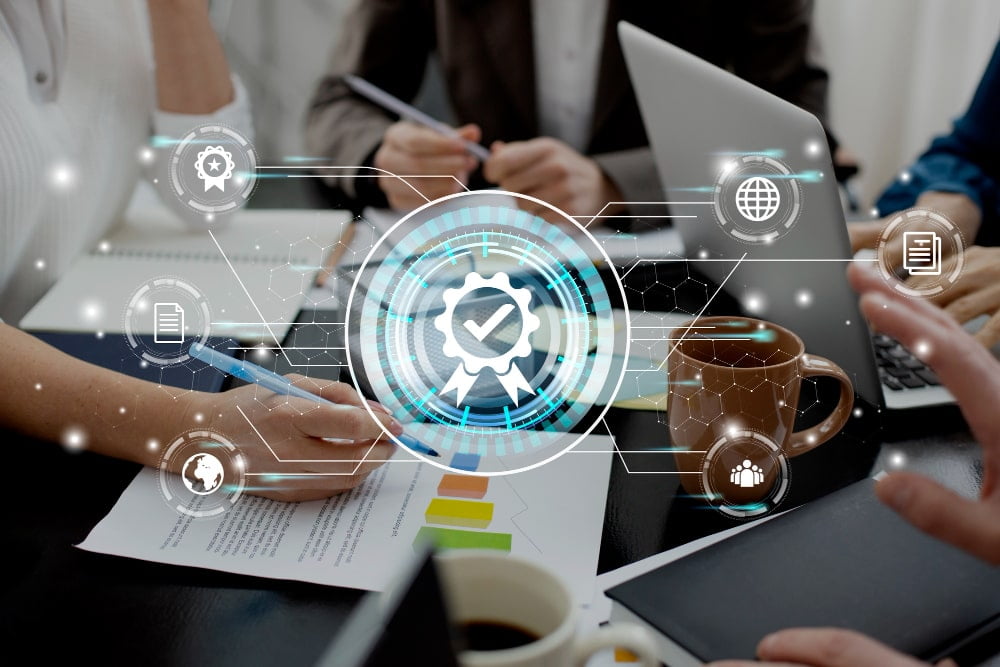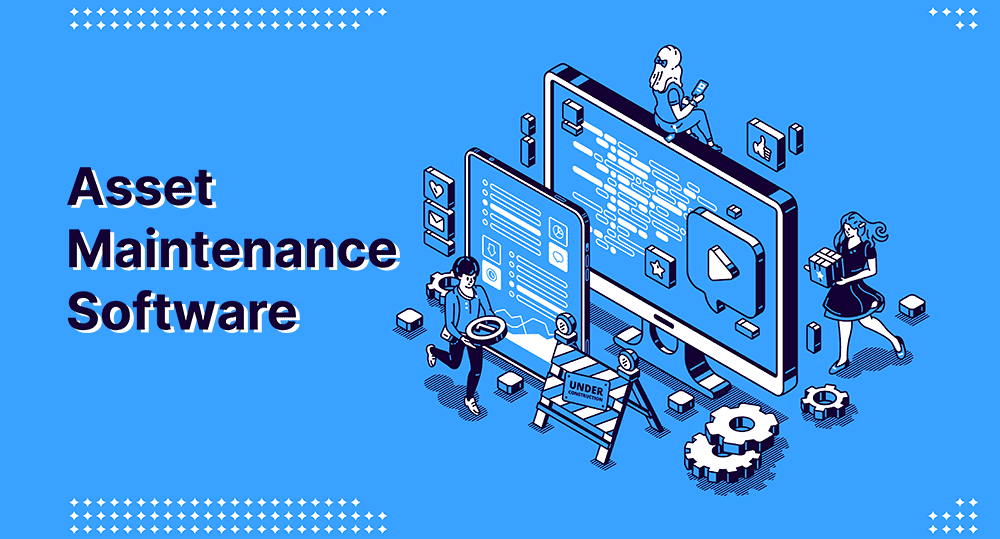As a key decision-maker of a growth-oriented organization, you always want to promote a collaborative work environment where employees are encouraged to work together, share ideas, and leverage each other’s strengths.
Unfortunately, the Covid-19 pandemic has changed the way we work!
With the rise of hybrid work and employees operating from a variety of devices and locations, it’s becoming more challenging for IT leaders to keep a grip on the digital workplace.
However, to create intuitive and seamless employee experiences in the digital workplace, many businesses are undergoing a digital transformation journey to reshape their workplace.
One of the key aspects of this transformation is the focus on Digital Employee Experience (DEX) – the holistic approach to leveraging digital technologies to create a positive, engaging, and productive work environment for employees.
Related blog: 6 Things about Digital Employee Experience (DEX) that all leaders must know
According to a survey conducted by 1E, 67% of employees agreed that “digital experiences in personal life are better than digital experiences at work.”
From virtual and remote work arrangements to wellness and well-being initiatives, DEX can foster a digitally-driven work culture and drive business success in the digital era.
Also, it has the power to reshape the future of work by providing effective employee engagement strategies for talent acquisition and retention efforts.
Let’s dive into the world of DEX and unlock the key to unleashing the full potential of your workforce in the digital age!
What is Digital Employee Experience Management?
Digital employee experience management refers to the strategic approach of leveraging digital technologies and tools to create a positive, engaging, and productive work environment for employees. It encompasses all the digital interactions and touchpoints that employees have with their organization, including but not limited to the use of digital communication tools, collaboration platforms, employee self-service portals, performance management systems, learning and development platforms, and employee engagement applications.
Furthermore, it involves designing, implementing, and optimizing digital solutions that enhance employees’ experience throughout their entire lifecycle – from onboarding to ongoing work tasks, career development, and offboarding. It encompasses a wide range of areas, including employee engagement, communication, collaboration, performance management, well-being and wellness, learning and development, and talent management.
Why Should You Invest in Digital Employee Experience?
With the increasing reliance on digital technologies and the rise of virtual work arrangements, investing in digital employee experience management has become more crucial. It is a strategic imperative for organizations to thrive in the digital era and stay ahead of the competition.
Here are a few reasons why you should invest in the DEX platform:

Evolving Work Landscape
The workplace is continuously evolving, with virtual and remote work becoming more prevalent and businesses embracing digital technologies for communication, collaboration, and productivity. DEX will be essential in enabling and optimizing these digital work arrangements, ensuring that employees have seamless access to digital tools, resources, and support to work effectively in a digital-first environment.
Focus on Employee Well-Being
Employee well-being has gained increased attention in recent years, and DEX is expected to continue playing a crucial role in supporting employees’ physical, mental, and emotional well-being. Digital tools for wellness, mental health, and work-life balance will be crucial in providing employees with resources, support, and guidance to manage their well-being effectively, especially as the boundaries between work and personal life continue to blur in the digital era.
Enhanced Employee Engagement
Employee engagement is critical for productivity, retention, and overall business success. DEX will continue to play a significant role in enhancing employee engagement by providing employees with a positive digital work experience. This includes seamless access to digital tools, opportunities for collaboration, recognition, and rewards, and personalized learning and development, which can help employees feel motivated, empowered, and connected to their work and the organization.
Talent Acquisition and Retention
Attracting and retaining top talent is a competitive challenge for businesses, and DEX will be crucial in this regard. Candidates are increasingly seeking organizations offering a modern, tech-savvy, and employee-centric work environment. Businesses that prioritize DEX will be better positioned to attract and retain top talent by providing a positive and engaging digital work experience that aligns with the expectations of the modern workforce.
Digital Transformation
Businesses across industries are undergoing digital transformation journeys, and DEX is a key enabler of this process. DEX involves leveraging digital technologies to enhance the overall employee experience and enable a digitally-driven workplace. In 2023, businesses will continue to focus on digital transformation, and DEX will be crucial in ensuring that employees have the necessary digital tools, skills, and support to thrive in a digitally-driven work environment.
Employee-Centric Approach
Organizations recognize the importance of putting employees at the center of their operations and decision-making. DEX will continue to play a critical role in fostering an employee-centric approach, where the needs, preferences, and expectations of employees are prioritized. By leveraging digital tools and technologies, businesses can create a more employee-centric work environment, resulting in improved employee satisfaction, engagement, and loyalty.
Data-Driven Insights
DEX enables businesses to collect and analyze employee experience, engagement, productivity, and well-being data. In 2023, data-driven insights will continue to be significant in shaping the workplace. By leveraging analytics and data-driven insights, businesses can make informed decisions, identify areas for improvement, and continuously optimize the employee experience to drive better business outcomes.
Best Practices to Improve Your Digital Employee Experience
Improving DEX is a challenging task requiring much time and effort. Most companies use dozens of tools, from conference call software to cloud contact centers and dedicated project management platforms, to transform their business processes.

With so many moving parts, how can you minimize silos and friction for your employees? Here are a few tips on how to create a digital workplace:
Define Clear Roadmap for Your DEX Goals and Objectives
You’ll need to create a clear roadmap by defining goals and objectives for your DEX initiatives. Here are some questions you might want to ask:
- What do you want to achieve through digital employee experience efforts?
- How exactly will DEX assist you in achieving your company objectives?
- Which types of digital tools or technologies are you planning to employ? For example, automation, asynchronous communication, self-service, workflow management, and so on.
- How much training will be required for your staff to use those tools properly?
- How will you assess your progress?
A clear roadmap will help you evaluate your options and prepare for challenges as you go through the process. Furthermore, your goals should be aligned with the overall business objectives and should be measurable, realistic, and achievable.
Understand Your Employee Needs and Preferences
As a strategic business owner, you should invest time in understanding your employees’ needs, preferences, and pain points when it comes to digital tools and technologies. This can be done through surveys, feedback sessions, and user testing. This understanding can help organizations design DEX initiatives that are tailored to their employees’ requirements, leading to higher adoption and engagement.
Simplify and Streamline Digital Tools and Technologies
According to the Firstup Survey, 78% of workers now use 6-10 digital tools on an average just to communicate. So, make sure the digital tools and technologies used by your employees should be simple, user-friendly, and streamlined. Complex and cumbersome tools can hinder productivity and engagement.
Enable Effective Communication and Collaboration
Effective communication and collaboration are critical for a positive digital employee experience. Therefore, investing in digital communication tools, collaboration platforms, and project management tools is essential to facilitate seamless communication and collaboration among employees, regardless of their location or time zone.
Ensure Accessibility and Inclusivity
Make sure your digital tools and technologies are accessible and inclusive to all employees, including those with disabilities or different abilities. This can involve designing user interfaces that are accessible, providing captioning or transcripts for multimedia content, and ensuring that digital resources are available in multiple formats.
Provide Ongoing Support and Feedback
When introducing new tools to employees, make sure you have a training program designed to help them get started and learn how to use those apps and software. Hence, it is essential to provide ongoing support and feedback to employees regarding the use of digital tools and technologies. This can include providing regular training sessions, conducting feedback surveys, and having a reliable support system to address any issues or challenges employees may face using digital tools.
Measure and Optimize Your DEX Initiatives
It is always essential to regularly measure and analyze the effectiveness of your DEX initiatives. This can involve gathering feedback, analyzing usage data, and conducting employee surveys to assess the impact of digital tools and technologies on employee engagement, productivity, and satisfaction. Based on the findings, organizations should continuously optimize their DEX initiatives to ensure that they remain relevant and effective.
Related article: Best Digital Employee Experience Platforms
Final Note

In today’s digital age, investing in the digital employee experience is not just a trend but a strategic imperative for organizations to thrive. By aligning digital tools and technologies with employee needs, simplifying and streamlining processes, fostering a culture of continuous learning, and ensuring accessibility and inclusivity, organizations can create a positive and engaging digital employee experience.
This can result in enhanced employee engagement, improved productivity, talent attraction, and retention, agility, and innovation. Regularly measuring and optimizing DEX initiatives can help organizations stay ahead of the curve and create a workplace where employees can thrive, contributing to the organization’s overall success in the modern era of work. It’s time for organizations to embrace the power of digital employee experience and unlock the full potential of their workforce.


















